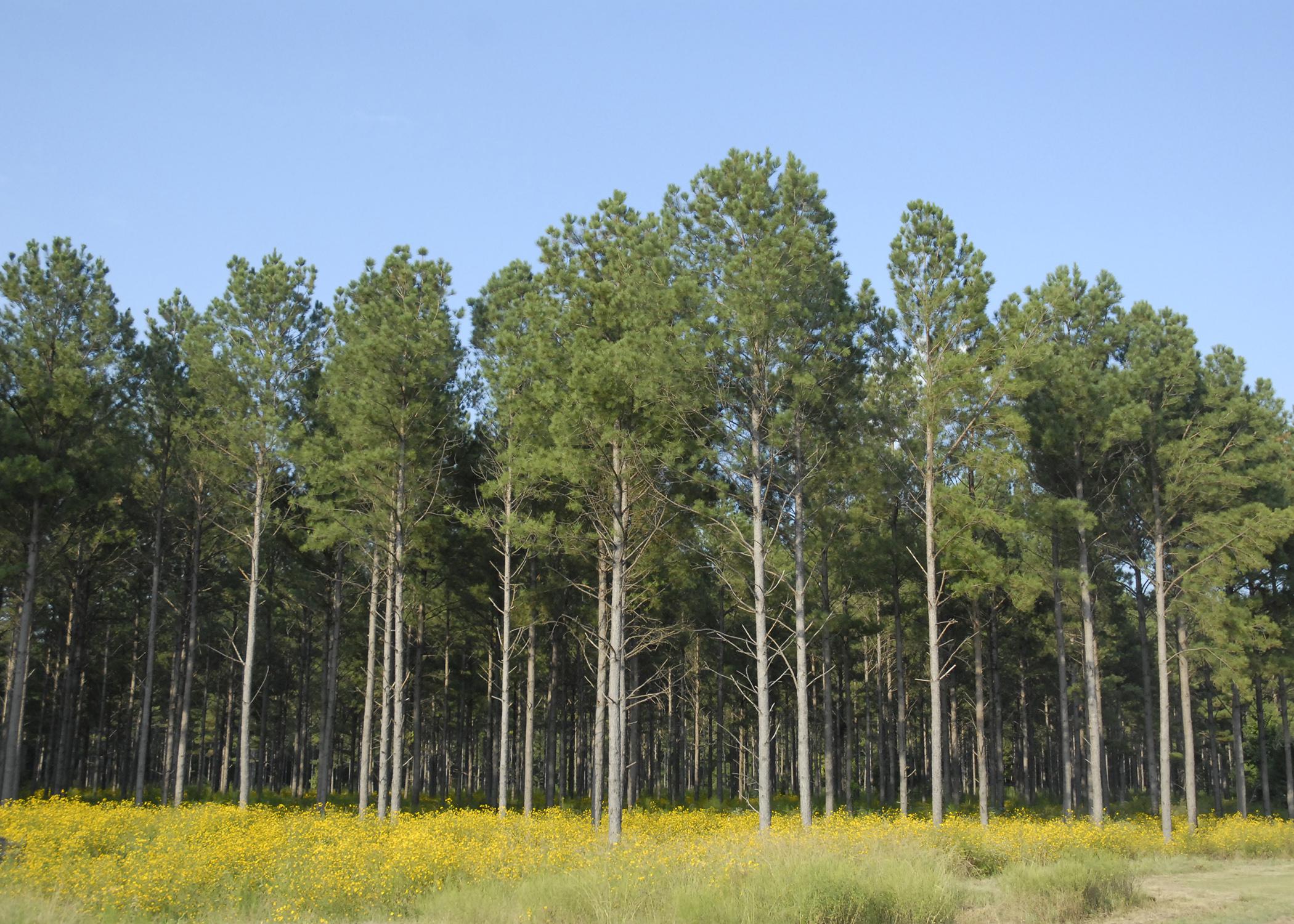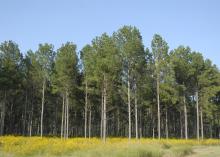Information Possibly Outdated
The information presented on this page was originally released on May 29, 2015. It may not be outdated, but please search our site for more current information. If you plan to quote or reference this information in a publication, please check with the Extension specialist or author before proceeding.
Timber revenue, wildlife habitat: Can you have both?
STARKVILLE, Miss. – I was born and raised in the South, so it’s hard for me to imagine a world without trees.
Bottomland hardwoods, mixed oak and hickory forests, and pine savannahs are all iconic scenes of Mississippi’s wild lands. Trees are not only a beautiful fixture of the Southeastern landscape; they are also very important economically and ecologically. Whether you realize it or not, trees impact our lives in many ways. The houses we live in, the furniture we sit in and sleep on, and the paper products we use every day are all derived from trees.
In fact, the science of forestry was developed to grow, manage and harvest trees on a sustainable basis to satisfy society’s needs. It is safe to say that trees play an important financial role and support thousands of jobs and many industries.
Trees also play a very important ecological role, as they create habitat for wildlife. Many birds and mammals use trees for nesting and refuge, while the fruits and nuts produced by trees provide a vital source of food for wildlife throughout the year.
About 20 of Mississippi’s 30 million acres are composed of forestland. Of that, about 12.5 million acres are non-industrial, or privately owned. For about 70 percent of the state, managing wildlife habitat means managing trees. It’s easy to see that if you are interested in managing a forest for wildlife habitat in Mississippi, you need to understand the basics of forest management.
Clearly, trees are economically important for Mississippi landowners, but what if you are interested in both timber revenue and wildlife on your property? Can you manage a forest to optimize the amount of timber and wildlife habitat at the same time? Well, that’s like the old saying about having your cake and eating it too. You can certainly have wildlife habitat when timber revenue is your goal, but much less when compared to timber stands that are managed with wildlife habitat in mind.
With timber and wildlife, you have to prioritize which you want more. The reason you can’t have both is essentially due to sunlight. In a forest managed to produce the greatest amount of timber, the goal is to grow as many trees as the site will support. Imagine a crop field fully stocked with corn or soybeans and apply the same concept to trees. Most of the sunlight, water and soil resources are used to grow trees and produce the greatest timber income for the landowner.
On the other hand, if a landowner wanted to improve wildlife habitat for deer, turkey, rabbits or quail, the number of trees would have to be reduced. This is because those wildlife species need herbaceous plants at ground level for food and cover, and these plants require sunlight for growth. The forest manager must reduce the number of trees to create more open space for broadleaf plants and grasses to grow on the forest floor. The wildlife manager can maintain these plants with prescribed burning every two to five years to renew their growth and improve their nutritional quality. The forest and wildlife managers are creating a more open forest with prairie-like conditions on the ground.
But wildlife habitat and timber revenue are not mutually exclusive. That is, you don’t have to choose one or the other, but you do have to select a level of each you prefer. It’s similar to the see-saw on the playground – when one side goes up, the other goes down. Timber revenue will increase with more trees per acre, but those trees will capture most of the sunlight and soil resources, which will diminish habitat available for wildlife. On the other hand, if you remove most of the trees to create the most wildlife habitat, the revenue generated from timber will be greatly reduced.
Both timber and wildlife are both valuable natural resources for Mississippi. As a landowner, you can have both timber and wildlife, but you can’t optimize the value of both at the same time. You have to consider the trade-offs. No decision is wrong; it just depends on what you want. If you are a landowner and are interested in timber revenue and wildlife habitat on your property, you should meet with both a registered forester and a wildlife biologist to customize a management plan that addresses your particular objectives.

Editor’s Note: Extension Outdoors is a column authored by several different experts in the Mississippi State University Extension Service.










